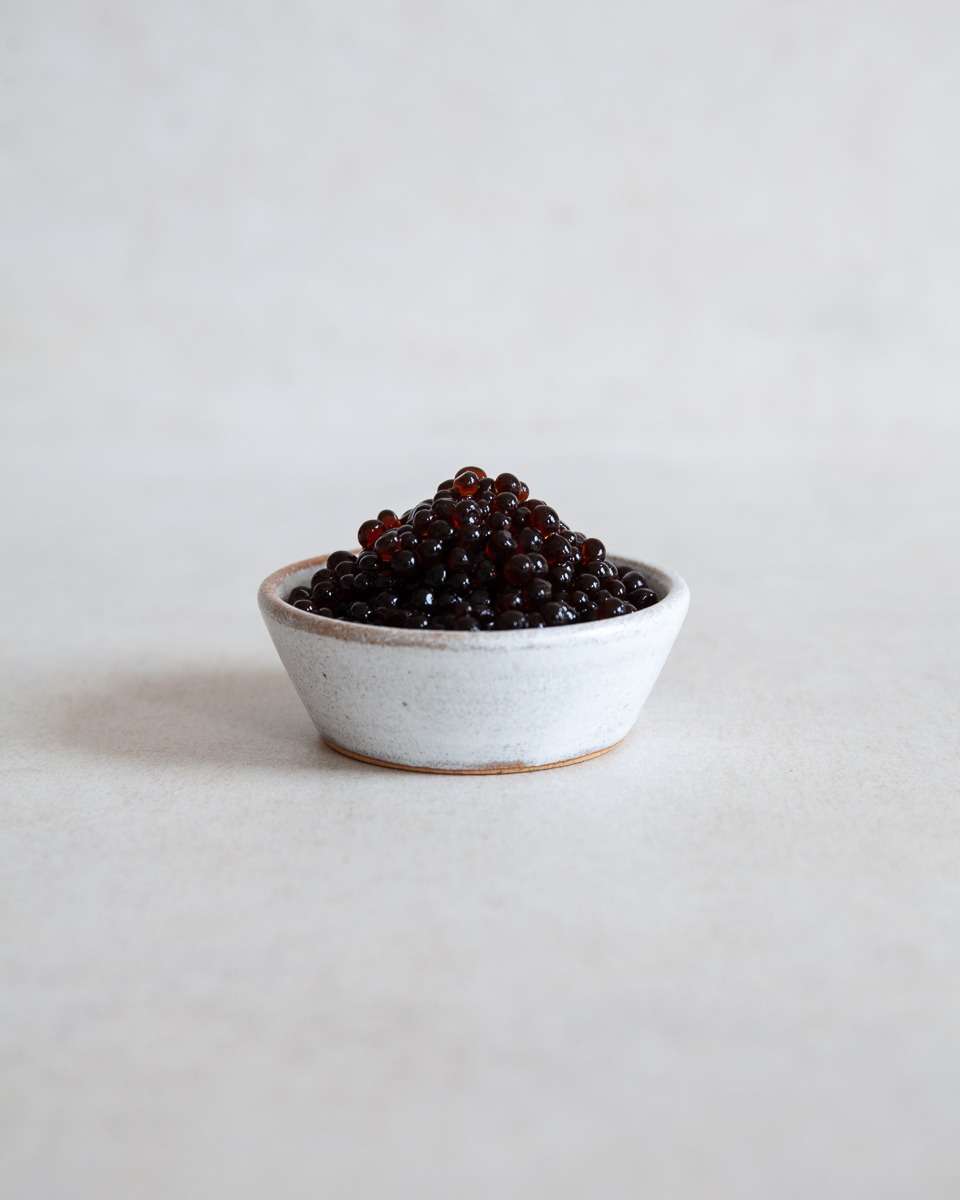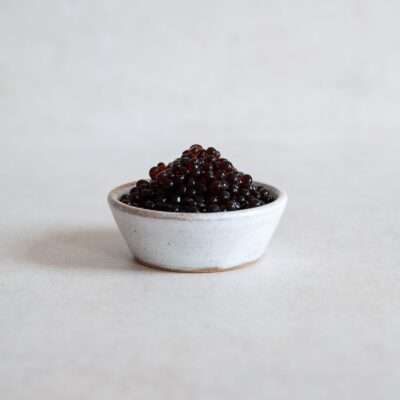Balsamic Pearls

Ingredients
-
2g agar flakes (1 tsp)
-
120ml balsamic vinegar
-
200 ml olive oil (don’t worry, you can reuse it afterwards)
Method
Add the agar flakes and vinegar to a pan to soak. Pour the olive oil into a jar or glass and place it in the freezer for 45 minutes.
Ten minutes before the oil is ready, bring the vinegar to a boil, then simmer for 3-4 minutes, stirring regularly, until most of the flakes have dissolved. Strain the liquid through a small sieve to catch any remaining agar flakes and let it cool for 5 minutes.
When the 45 minutes are up, remove the jar of oil from the freezer. Fill a pipette with the vinegar mixture and add droplets of it to the cold oil (you can also let them roll off from a fork). The pearls will form immediately as they sink to the bottom of the jar. Once you’ve used all of the vinegar, strain the pearls into a fine sieve (you can reuse the olive oil). Then store them in a small container in the fridge, ready to use. They will keep airtight for around 2 weeks.

Balsamic Pearls
Ingredients
- 2 g agar flakes (1 tsp)
- 120 ml balsamic vinegar
- 200 ml olive oil (don’t worry, you can reuse it afterwards)
Instructions
- Add the agar flakes and vinegar to a pan to soak. Pour the olive oil into a jar or glass and place it in the freezer for 45 minutes.
- Ten minutes before the oil is ready, bring the vinegar to a boil, then simmer for 3-4 minutes, stirring regularly, until most of the flakes have dissolved. Strain the liquid through a small sieve to catch any remaining agar flakes and let it cool for 5 minutes.
- When the 45 minutes are up, remove the jar of oil from the freezer. Fill a pipette with the vinegar mixture and add droplets of it to the cold oil (you can also let them roll off from a fork). The pearls will form immediately as they sink to the bottom of the jar. Once you’ve used all of the vinegar, strain the pearls into a fine sieve (you can reuse the olive oil). Then store them in a small container in the fridge, ready to use. They will keep airtight for around 2 weeks.

Brilliant
I tried it with balsamic and also with soy!
Both worked fabulously
I need to try it with soy sauce! Such a good idea!
Hi, This is so interesting. I’d like to gift it and am wondering how far in advance I can make it. I’m guessing it doesn’t need to be refrigerated since its just vinegar, oil and agar agar? Thanks
Yes I’d recommend storing them in the fridge. Sorry!
Oh dear I just read the answer to my question at the end of the instructions. Please ignore my question!
Yes, I’d recommend storing them in the fridge, unfortunately. Sorry, it’s a lovely gift idea!